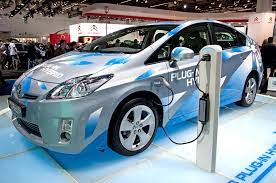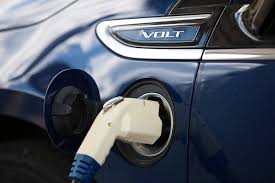The Most Successful Subsections within the Automotive Industry
The automotive industry has witnessed noteworthy growth and development, growing into a diverse and dynamic sector. Several subsections within the automotive industry have developed as highly successful with continuous design, technology, and engineering developments. In this essay, two of the most successful subsections within the automotive industry are based on the insights from Chapter 4.
Electric Vehicles (EVs)

Electric vehicles have revolutionized the automotive industry, offering a sustainable and environmentally friendly alternative to traditional internal combustion engine (ICE) vehicles. EVs operate using electric motors powered by rechargeable batteries, reducing or eliminating harmful emissions, and promoting a greener future. The success of electric cars can be attributed to several factors.
Environmental Benefits:
One of the primary motives behind the success of electric vehicles is their crucial environmental benefits. With growing apprehensions about air pollution and climate change, EVs provide a cleaner mode of transportation. By eradicating tailpipe emissions, they improve air quality by lessening greenhouse gas emissions. Governments worldwide have become familiar with these advantages and introduced incentives and regulations to encourage the adoption of electric vehicles, further boosting their success.
Technological Advancements:
A critical role has been played in the advancement of electric vehicle technology for their success. Over the years, there have been noteworthy developments in battery technology, leading to increased energy storage capacity and longer driving ranges. Furthermore, the development of fast-charging infrastructure has addressed the issue of inadequate charging stations, making electric vehicles more convenient and practical for everyday use. Moreover, continuous research and development have led to the introduction of innovative features, such as intelligent connectivity and regenerative braking, enhancing the overall driving experience.
Market Expansion:
The growing consumer demand and expanding market have been attributed to the success of electric vehicles. More consumers are willing to contemplate electric vehicles as worthwhile options as awareness about the environmental benefits of EVs increases. Automakers have responded to this demand by introducing several electric vehicle models across segments, from compact cars to SUVs and luxury vehicles. The increased accessibility of options has contributed to the growing success of electric cars and has encouraged more consumers to switch.
Autonomous Vehicles

Self-driving cars, or Autonomous vehicles, represent an alternative successful subcategory within the automotive industry. These vehicles are equipped with artificial intelligence, advanced sensors, and communication technologies, enabling them to circumnavigate and function without human intervention. Autonomous vehicles hold tremendous probability and offer numerous benefits that contribute to their success.
Enhanced Safety:
The potential to enhance road safety is one of the primary inspirations behind the development of autonomous vehicles. Human errors, such as fatigue or distracted driving, contribute to a large percentage of accidents on the road. With autonomous cars, the dependence on human drivers is minimized, eradicating the possibility of human error. Real-time data analysis and Advanced sensor systems enable autonomous vehicles to detect and respond to potential hazards more competently than human drivers. This increased safety aspect has garnered significant interest and support for autonomous vehicles.
Increased Efficiency and Convenience:
Autonomous vehicles have the potential to increase effectiveness and convenience in transportation. With self-driving capabilities, vehicles can optimize routes, minimize travel time and reduce traffic congestion. Furthermore, introducing autonomous ride-hailing services can provide affordable and convenient transportation options, especially for individuals who cannot drive or prefer not to. The convenience of autonomous vehicles, such as allowing passengers to use travel time for work or leisure, adds to their appeal and success.
Potential Economic Impact:
The success of autonomous vehicles extends beyond their technological advancements. They also have the potential to create significant economic impacts. The development and deployment of autonomous vehicles require collaborations among automakers, technology companies, and regulatory bodies, creating new job opportunities and fostering economic growth. Additionally, autonomous vehicles can reduce the financial burden caused by traffic accidents, congestion, and inefficient transportation systems.
Conclusion:
The automotive industry has witnessed the emergence of several successful subcategories, and electric vehicles and autonomous vehicles stand out as two of the most remarkable examples. Electric cars have gained traction due to their environmental benefits, technological advancements, and expanding market. On the other hand, autonomous vehicles offer increased efficiency, enhanced safety, and potential economic impact. These subsections illustrate the innovation and progress within the automotive industry, and their success paves the way for a future of sustainable and intelligent transportation.
References:
Aaker, D. (2011). Winning With New Categories And Subcategories. [online] Branding Strategy Insider. Available at: https://brandingstrategyinsider.com/winning-with-new-categories-and-subcategories/
Amjad, S., Balakrishnan, S. and Rudramoorthy, R. (2010). Review of design considerations and technological challenges for successfully developing and deploying plug-in hybrid electric vehicles. Renewable and Sustainable Energy Reviews, 14(3), pp.1104–1110. doihttps://doi.org/10.1016/j.rser.2009.11.001.
Sell, R., Rassõlkin, A., Wang, R. and Otto, T. (2019). Integration of autonomous vehicles and Industry 4.0. Proceedings of the Estonian Academy of Sciences, 68(4), p.389. doihttps://doi.org/10.3176/proc.2019.4.07.
www.linkedin.com. (n.d.). 3 Automotive Brands That Have Shined in Subcategory Competition. [online] Available at: https://www.linkedin.com/pulse/3-automotive-brands-have-shined-subcategory-david-aaker.





